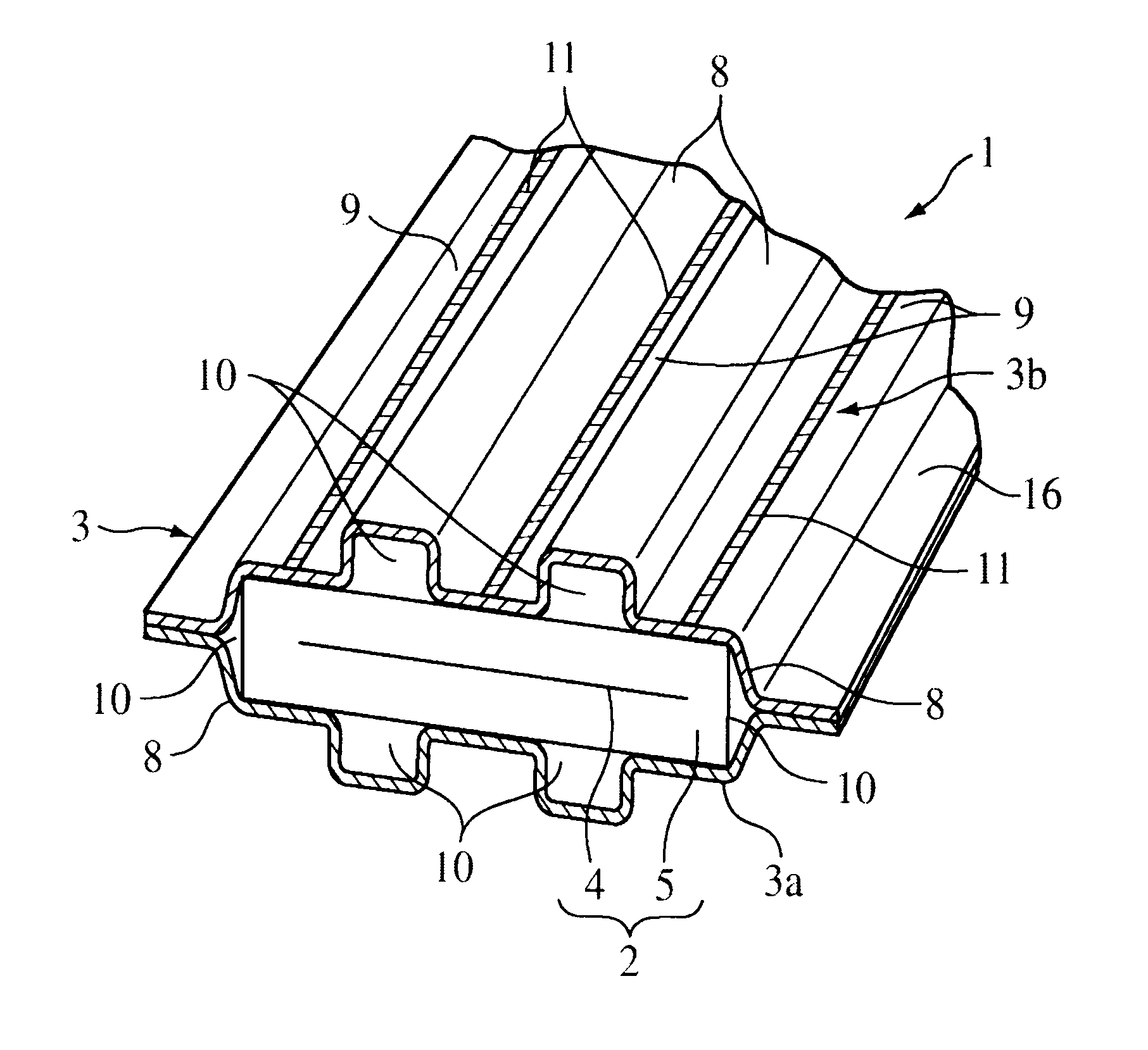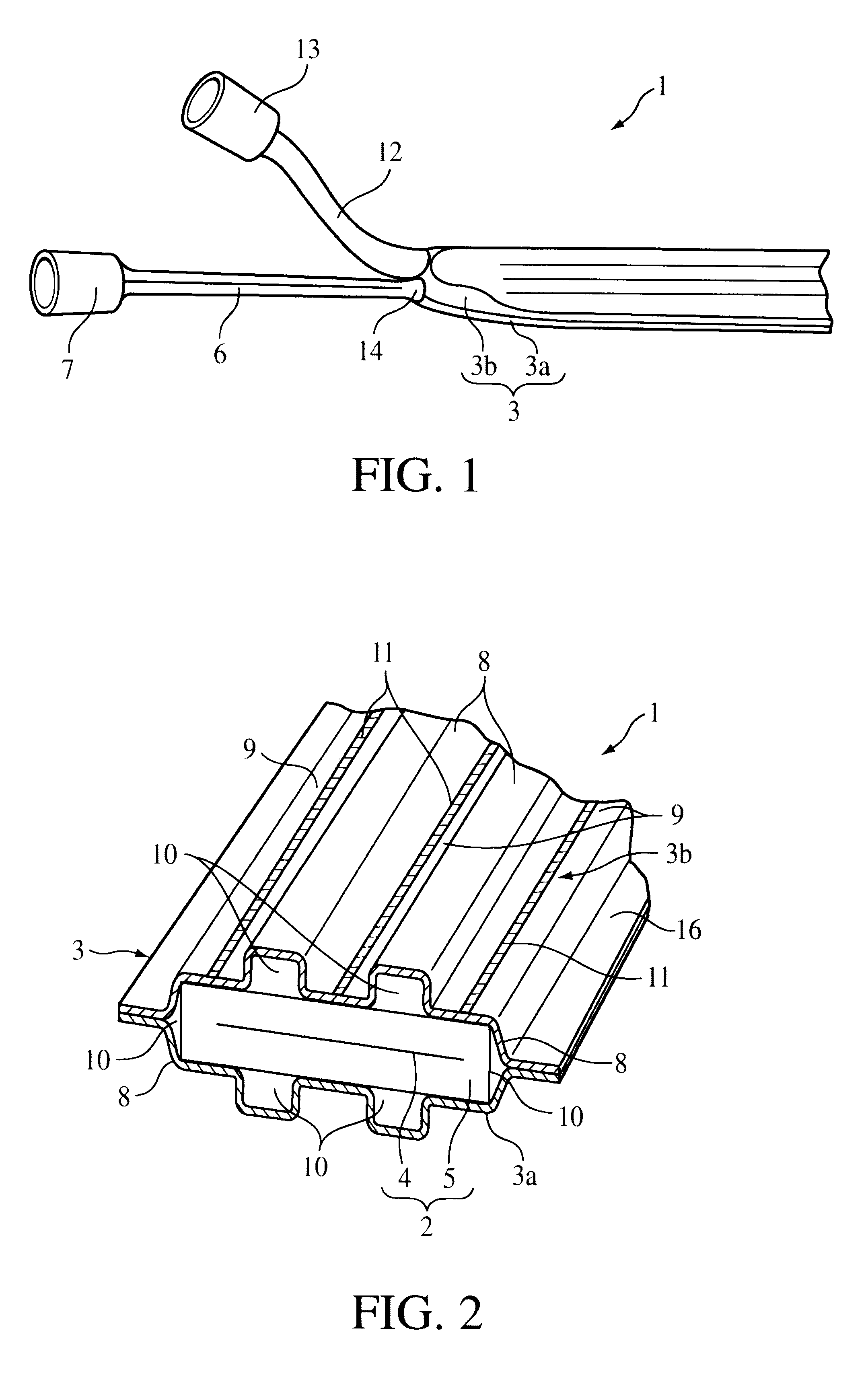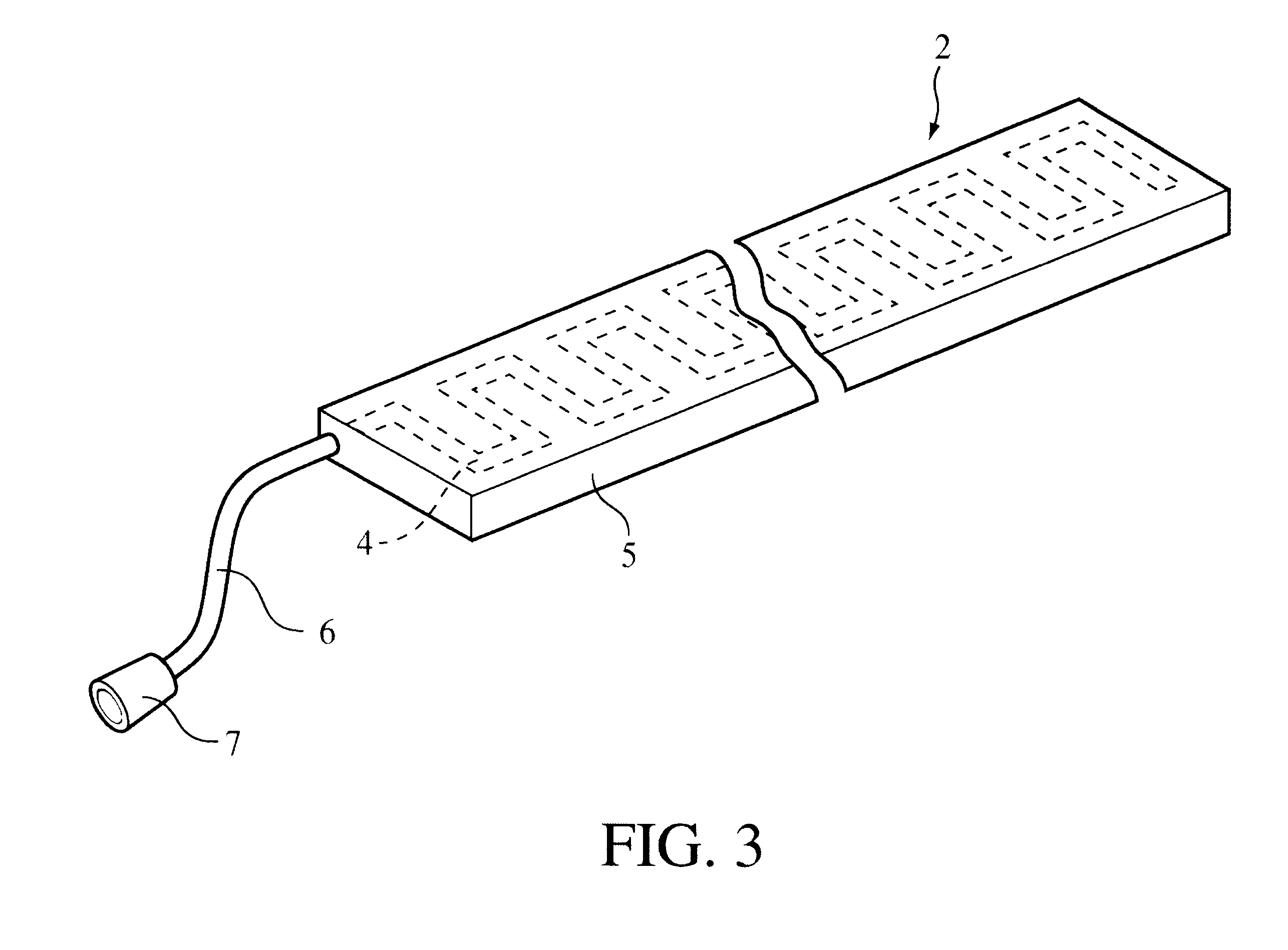Humidification control unit and method of manufacturing same
a technology of humidity control unit and humidity control unit, which is applied in the direction of air humidification system, lighting and heating apparatus, heating types, etc., can solve problems such as reducing humidification performan
- Summary
- Abstract
- Description
- Claims
- Application Information
AI Technical Summary
Benefits of technology
Problems solved by technology
Method used
Image
Examples
first embodiment
FIGS. 1 to 5 show a humidity regulating unit. The humidity regulating unit is installed inside an inhalation tube (not shown) for example near the patient of an inhalation circuit. For adult use, a tube with a diameter of about 22 mm is used in an artificial respirator to connect the patient's lungs (not shown) to an inhalation gas supply source (also not shown). Humidity regulating unit 1 includes a heating element 2 and a covering 3. The size of the humidity regulating unit 1 is, for example, about 18 to 20 mm in horizontal width, about 2 to 3 mm in thickness, and about 1 m in total length.
In this embodiment, as shown in FIG. 3, heating element 2 is a thin plate that has an extended shape with a rectilinear cross section, and has flat sides. Heating element 2 is an electric heating element, and to satisfy this electrical structure, heating element 2 includes a heating wire 4 (heater wire) and an insulator 5 that encloses the heating wire. Heating wire 4 is disposed inside insulato...
third embodiment
In this third embodiment, instead of using two halves 3a and 3b for covering 3", as in the first mode of embodiment described above, a single sheet is used for covering 3". The sheet is wrapped around heating element 2, and in addition to bonding portions 9 to the outer surface of heating element 2, ends 19 where the wrapping meets also are bonded. By using a single sheet as covering 3", part control and assembly operations can be simplified.
In the second and third embodiments described above, to maintain the independence of each water route 10, a structure is preferred in which heating element 2, 2' is placed tightly (i.e. in a watertight manner) within covering 3', 3". Furthermore, covering 3', 3" and heating element 2, 2' also can be bonded between adjacent water routes 10 as shown in the first embodiment (bonding sites 11).
PUM
 Login to View More
Login to View More Abstract
Description
Claims
Application Information
 Login to View More
Login to View More - R&D
- Intellectual Property
- Life Sciences
- Materials
- Tech Scout
- Unparalleled Data Quality
- Higher Quality Content
- 60% Fewer Hallucinations
Browse by: Latest US Patents, China's latest patents, Technical Efficacy Thesaurus, Application Domain, Technology Topic, Popular Technical Reports.
© 2025 PatSnap. All rights reserved.Legal|Privacy policy|Modern Slavery Act Transparency Statement|Sitemap|About US| Contact US: help@patsnap.com



